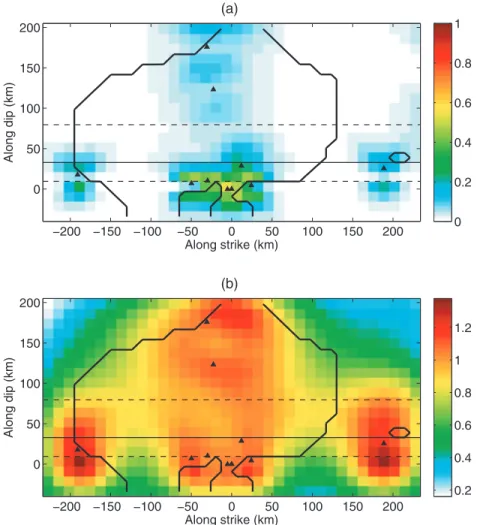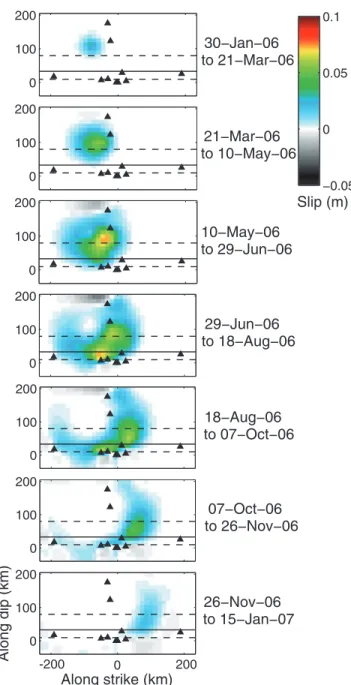Spatial and temporal evolution of a long term slow slip event: the 2006 Guerrero Slow Slip Event
Texte intégral
Figure
![Figure 1. Seismotectonic map [after Kostoglodov et al. (2003)] and GPS station location (black triangles)](https://thumb-eu.123doks.com/thumbv2/123doknet/13774425.439188/3.918.170.768.539.1026/figure-seismotectonic-kostoglodov-gps-station-location-black-triangles.webp)



Documents relatifs
Consistent with a beneficial role of sleep for memory consolidation, participants who slept after learning exhibited a significantly improved cued recall performance after the 12-hr
The nonmodal stability analysis, however, reveals that slip has a very weak influence on the maximum transient energy growth of perturbations at subcritical Reynolds numbers..
Final moment, slip and rupture length with time for slow-slip events, earthquakes and nucleation phase of
Kostoglodov (2011), Seismic evidence of nonlinear crustal deformation during a large slow slip event in Mexico, Geophys.. Lett., 38,
We observe a correlation between velocity changes (for period band greater than 14 s) and tremor activity whereas no correlation exists between velocity changes and seismic noise
Along the North Ih Bogd segment, we estimated the horizontal slip rate of the Bogd Fault at Bitut, a site located 40 km east of the the Noyan Uul site (Fig.. There, a system of
Mechanistic Studies on Pd-Catalyzed Fluorination of Cyclic Vinyl Triflates: Evidence for in situ Ligand Modification by TESCF 3 as an Additive 2 .1 Introduction
However, modeling saltation intermittency from a LES approach is still chal- lenging because saltation occurs near the surface, within a layer not exceeding 1 m height, where




